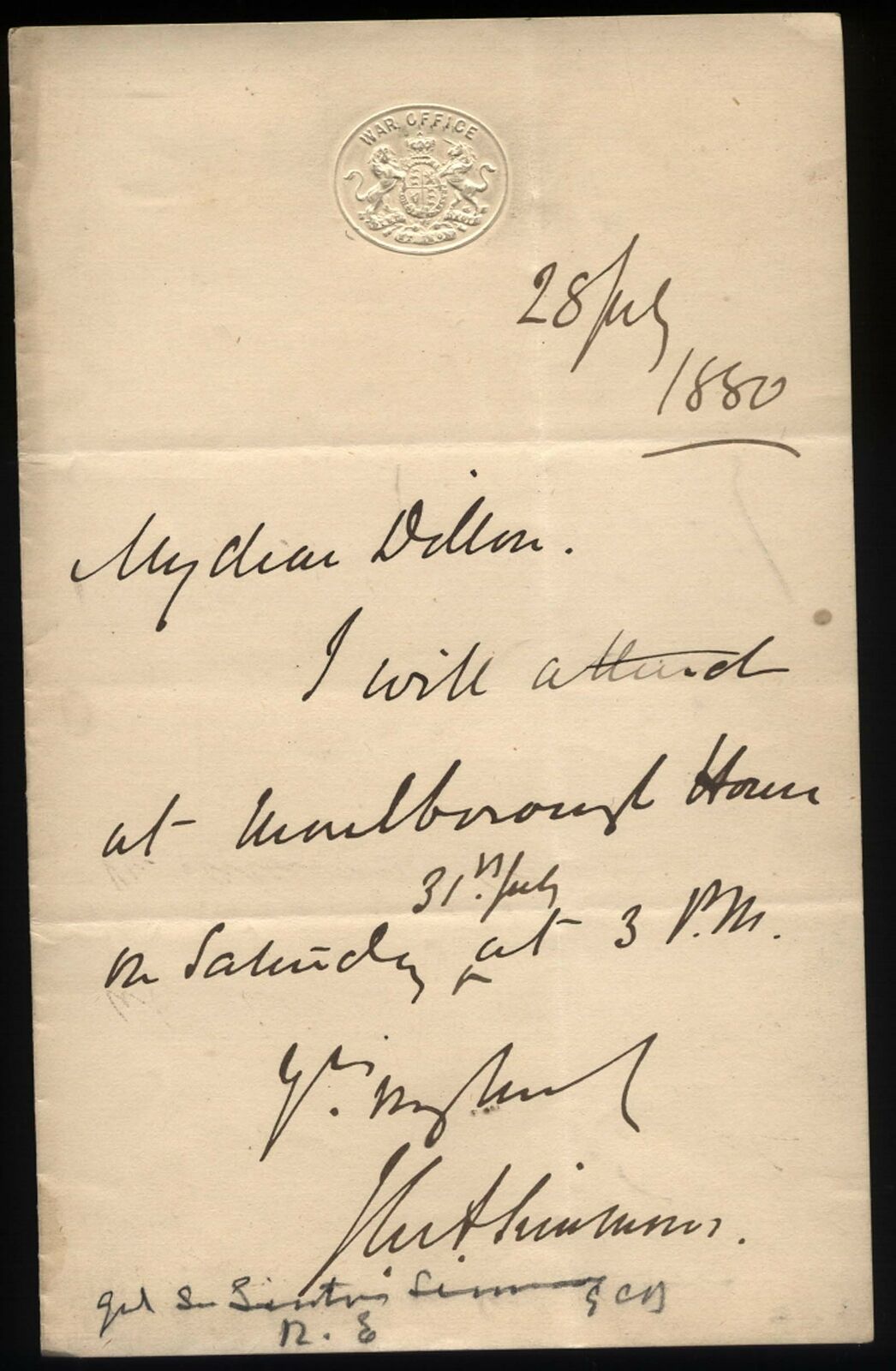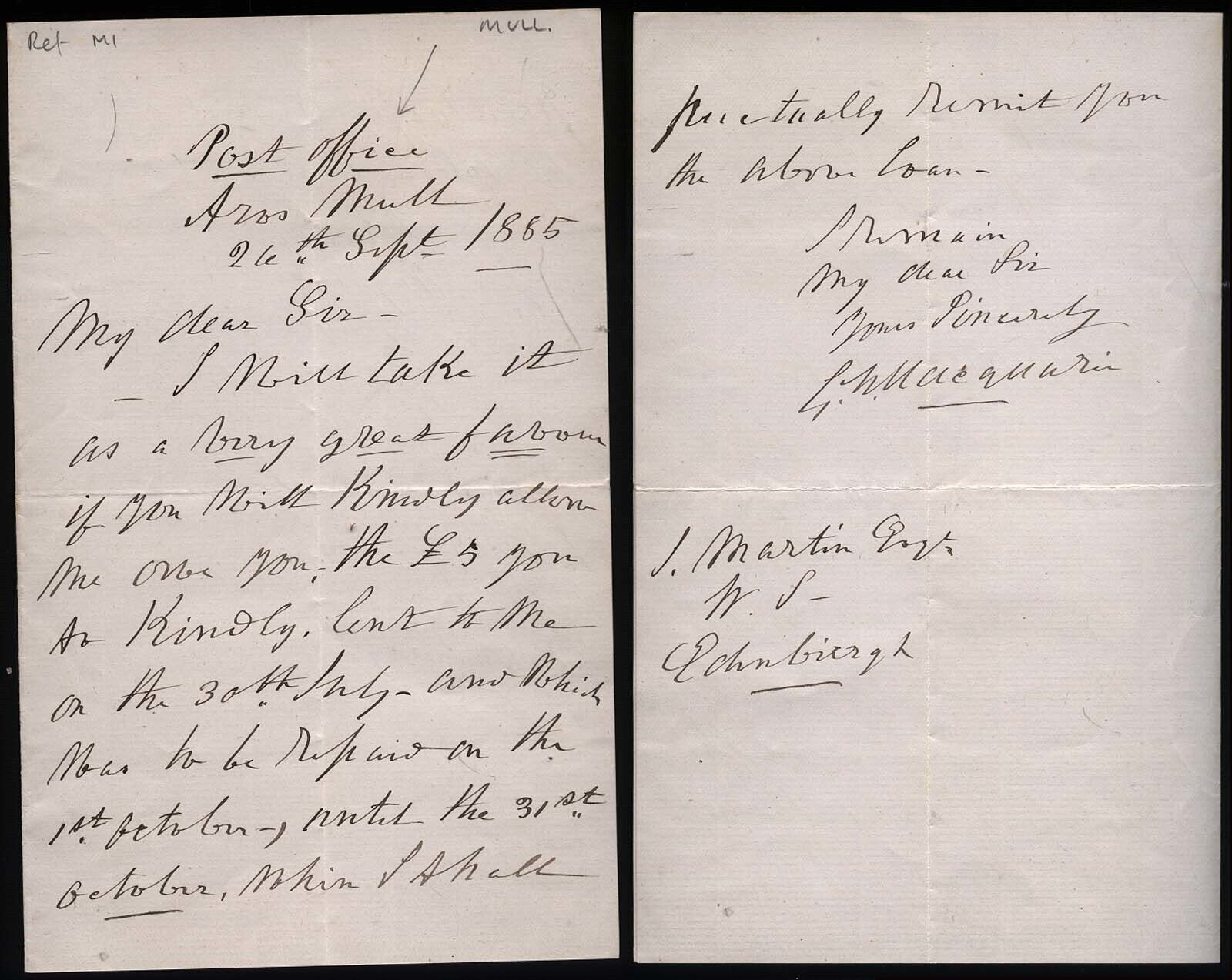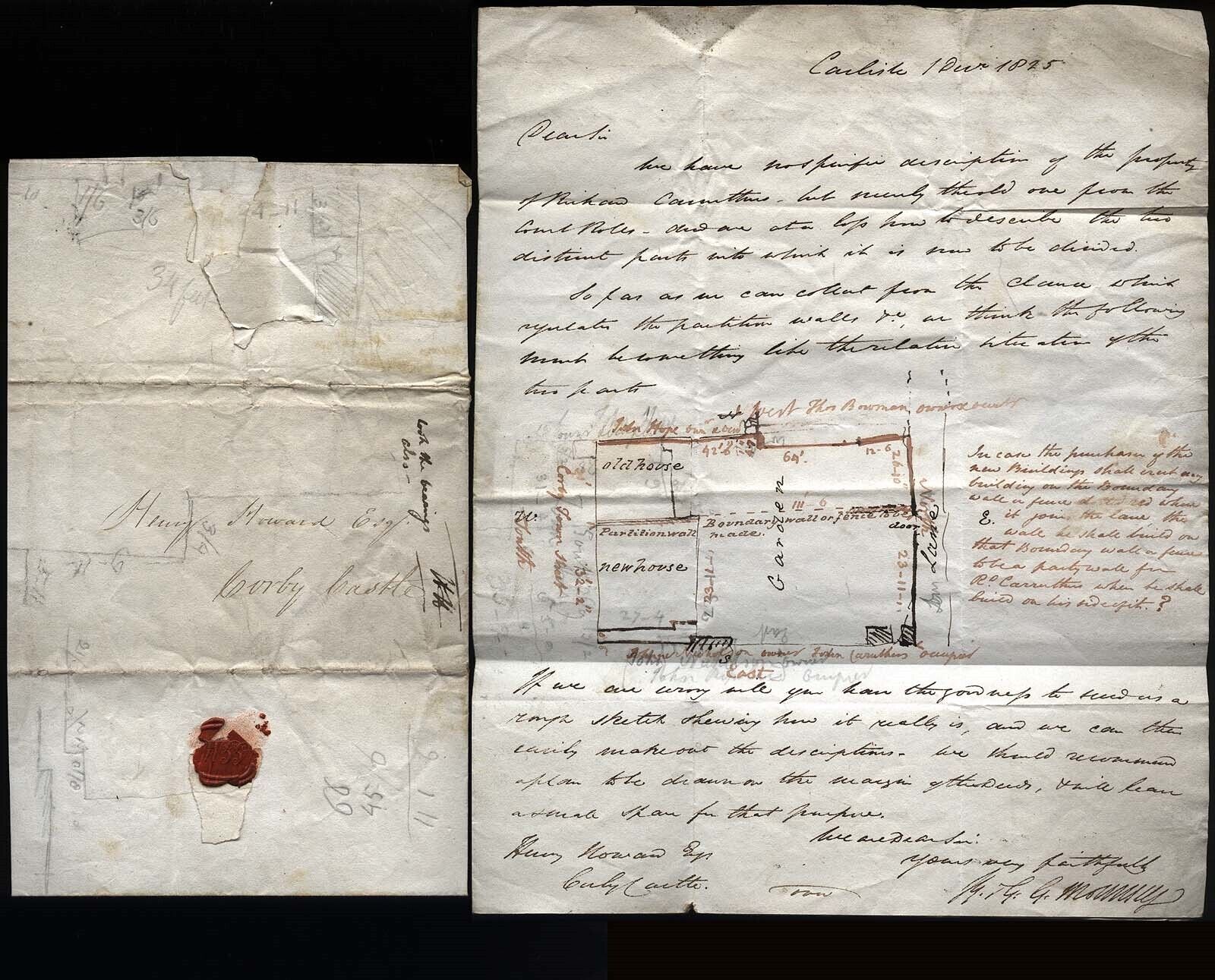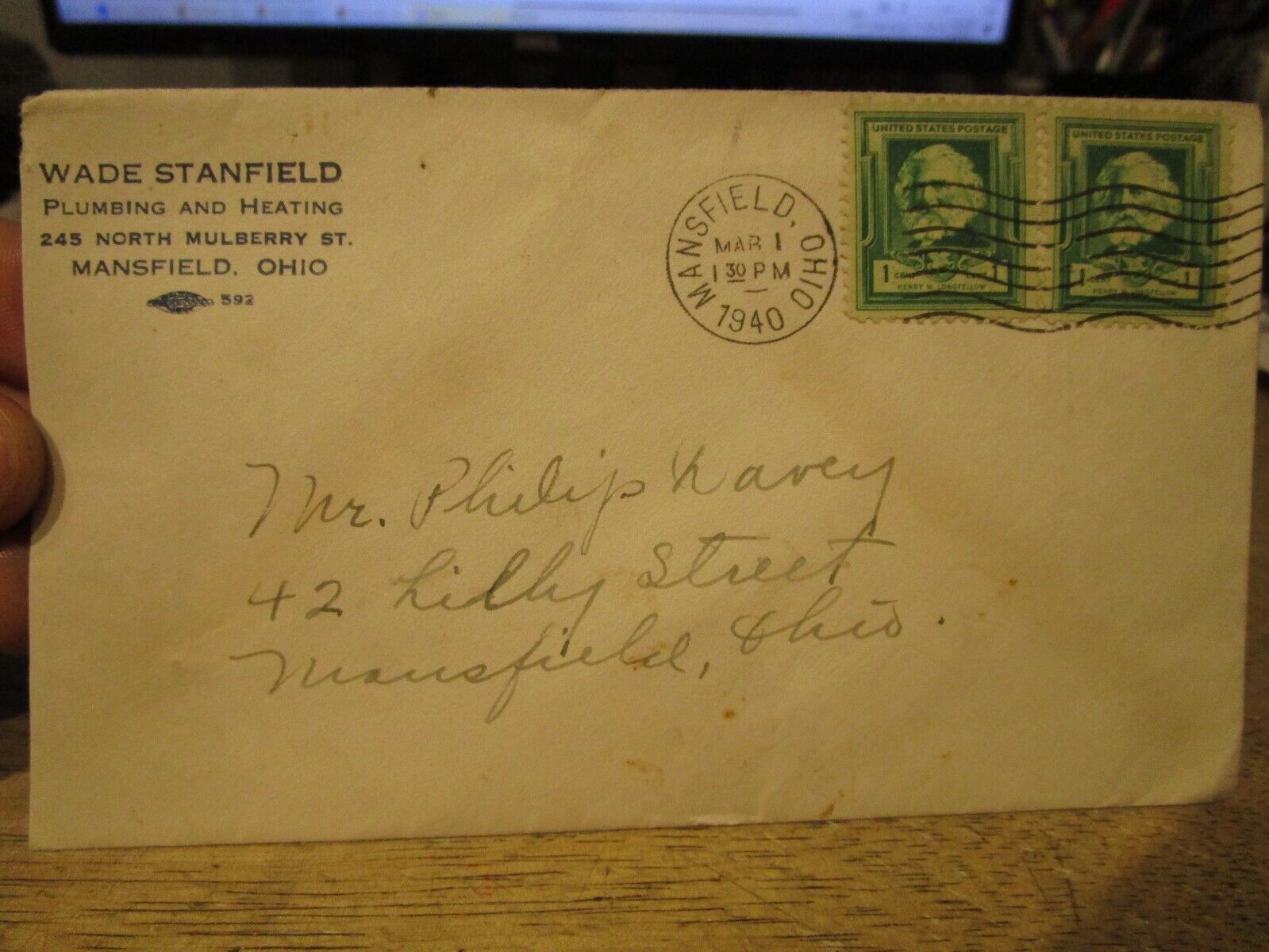-40%
1889 OSBORNE HOUSE Isle of Wight, MARY PONSONBY to JOHN ponsonby her Son
$ 159.95
- Description
- Size Guide
Description
1889 OSBORNE HOUSE Isle of Wight, MARY PONSONBY to JOHN ponsonby her SonThis product data sheet is originally written in English.
1889 OSBORNE HOUSE Isle of Wight, MARY PONSONBY to JOHN PONSONBY her Son.
"Osborne
August 11-1889
Dearest Johnny,
Betty says you are going to Aldershot for your examination on the 14th & 15th - but surely of Sept. not August as your Father supposed.
I have not seen your letter but remember you told me September?.
The night before last we dined at Kent House, it seemed to me so strange to see the sideboards where the Christmas presents used to be & the cut water bottles & dear old green plates, so Royal secure & different.
Itquite gave me the blacks, for it is such a very well known house & we have all been so happy there-"they tell me" it is a very good lawn Tennis ground & I answered "a que le dites vous!" (What do you say).
We played in the backdrawing room on the 'desin veritable' table at whist-your father with the Duchess of Edinburgh, Colonel Carrington & me, I thought the rubber never would end.
The others walked in the garden being - Princess Louise with Ch Lechendorf & Betty with Lord Larne.
I liked Lord L. very much he talked of Politics & Poetry-an alliteration!
Yesterday Betty & I established ourselves in the Lane beyond the Barnabys with an ...... of the West Cowes water which I drew."
Sir Henry and Lady Mary Ponsonby were two of the most important people at the court of Queen Victoria.
Mary Elizabeth Ponsonby [née Bulteel] Lady Ponsonby (1832–1916), courtier and advocate of women's advancement
.
Born at Yealmpton, Devon, where she was baptized on 19 October 1832, the second child and eldest of three daughters of John Crocker Bulteel (1793–1843), squire and master of foxhounds at Flete, Devon, who sat as whig MP for South Devon from 1832 to 1835, and Elizabeth, née Grey (1797/8–1880), daughter of Charles Grey, second Earl Grey and prime minister. She was linked to whiggery in her youth by her mother's family. Intensely religious as a young woman, she was friendly with Pauline Craven, a prominent Roman Catholic, but remained a member of the Church of England, within which she was initially strongly of a high-church inclination, even contemplating joining a sisterhood. In later life her religious opinions broadened, and she was accused of freethought and atheism. She was appointed a maid of honour to the queen on 17 March 1853, retaining the post until her marriage to Henry Ponsonby in 1861 (she broke a previous year-long engagement to William Vernon Harcourt in October 1854).
Mary Ponsonby was a member of the committee which from 1863 planned the foundation of Girton College, Cambridge, and was a member of the college from 1872 until her death. A prize there was given in her memory by her family.
Throughout her life she supported the advancement of women, especially in the professions, and was active with Jessie Boucherett on one of the committees for the employment of women which flourished in the 1870s.
Her political opinions, informed by wide reading in philosophy, became increasingly liberal; her younger daughter, Magdalen, described her as becoming 'a disciple of George Eliot and Herbert Spencer' (Mary Ponsonby, xviii). She wrote extensively for Nineteenth Century and other periodicals. Her liberalism—more pronounced and more publicized than her husband's—made her position at court uneasy: Victoria suspected her (rightly) of both 'cleverness' and 'advanced views', and (wrongly) of unduly influencing her husband's opinions, but none the less appointed her an extra woman of the bedchamber after her husband's death.
Mary Ponsonby found a more sympathetic character and friend in the queen's eldest daughter, the Empress Frederick of Germany, who shared her intellectual interests. In later years, her close friends included the composer Ethel Smyth and A. C. Benson. Her progressive views were a profound influence on her children, particularly Arthur Ponsonby, who was later a Labour MP, and her daughter Magdalen. She died at her home, Gilmuire, Ascot, on 16 October 1916.
Fresh to the Market Place, from Major-General Sir John Ponsonby's Collection
For more from this collection see our shop category for SIR JOHN PONSONBY COLLECTION
John Ponsonby (British Army officer)From Wikipedia, the free encyclopedia
Major-General Sir John Ponsonby KCB CMG DSO (25 March 1866 – 26 March 1952) was a British Army officer who commanded 5th Division during World War I
Born the son of Sir Henry Ponsonby (Queen Victoria's Private Secretary), his Mother Hon. Mary Elizabeth Ponsonby, Maid of Honour to Queen Victoria and a daughter of John Crocker Bulteel.
His brothers were Frederick Ponsonby, ( Assistant Private Secretary to Edward VII & GV), and Arthur Augustus William Harry Ponsonby, 1st Baron Ponsonby of Shulbrede, (British politician, writer, and social activist).
Sir John was educated at Eton College, He was gazetted to the Royal Irish Rifles 16 November 1887, and to the Coldstream Guards 15 August 1888, becoming Lieutenant 29 June 1891. He was ADC to the Governor and Commander-in-Chief, South Africa, 10 August 1891 to 30 January 1895; served in operations in Matabeleland (Medal); was promoted to Captain 7 September 1898, and in that year served in Uganda (Medal), and again in 1899, during the operations against Kabarega (clasp). Captain Ponsonby served in the South African War, 1899-1902, on special service with the Rhodesian Field Force, 19 February 1900 to 7 July 1901. He was Adjutant, 5th New Zealand Regiment, 8 June 1900 to 1 January 1901; afterwards in command 1 January to 18 January 1901. From February to May 1900, be was employed with Mounted Infantry, and he took part in operations in the Transvaal, west of Pretoria, from July to 29 November 1900; operations in the Transvaal, February to June 1901; operations in Cape Colony, February to 31 May 1902. He was mentioned in Despatches [London Gazette, 10 September 1901]; received the Queen's Medal with four clasps, the King's Medal with two clasps, and was created a Companion of the Distinguished Service Order [London Gazette, 27 September 1901]: "John Ponsonby, Captain, Coldstream Guards. In recognition of services during the operations in South Africa". The Insignia were presented by the King 27 October 1901. He was promoted to Major 23 January 1904, and commanded the Guards' Depot 1 March 1905 to 28 February 1907. He became Lieutenant Colonel 28 October 1913.
Lieutenant Colonel Ponsonby served in the European War, 1914—18; Landed in France 13th August 1914 in charge of 1st Coldstream Guards,Wounded 15th September & returned to unit 21st November. commanded the 2nd Guards Brigade, BEF, 26 August 1915 to 19 November 1916: was given the Brevet of Colonel 1 January 1916; commanded the Special Reserve Infantry Brigade 28 November 1916 to 7 March 1917; commanded the 21st Infantry Brigade, BEF, 8 March to 20 March 1917; became Colonel 20 March 1917; commanded the 2nd Guards Brigade, British Armies in France, 21 March to 21 August 1917; commanded the 40th Division, British Armies in France, 22 August 1917 to 3 July 1918; subsequently commanded the 5th Division, British Armies in France, 4 July 1918 to 1 April 1919; was promoted to Major General 1 January 1919. He was mentioned in Despatches; created a CMG in 1915, a CB in 1918, and was given the Brevet of Colonel.
He went on to become General Officer Commanding 5th Division remaining in that role until the end of the War. After the War he became General Officer Commanding the Madras District of India. He retired in 1928.
He lived at Haile Hall near Beckermet in Cumbria
:
Powered by SixBit's eCommerce Solution
1889 OSBORNE HOUSE Isle of Wight, MARY PONSONBY to JOHN PONSONBY her Son. "Osborne August 11-1889 Dearest Johnny, Betty says you are going to Aldershot for your examination on the 14th & 15th - but surely of Sept. not August as your Father supposed. I have not seen your letter but remember you told me September?. The night before last we dined at Kent House, it seemed to me so strange to see the sideboards where the Christmas presents used to be & the cut water bottles & dear old green plates, so Royal secure & different. Itquite gave me the blacks, for it is such a very well known house & we have all been so happy there-"they tell me" it is a very good lawn Tennis ground & I answered "a que le dites vous!" (What do you say). We played in the backdrawing room on the 'desin veritable' tab
Royal/ Reign
Victoria (1837-1901)
Titled Families
Ponsonby
Features
Original Autograph signed letter
EAN
Does Not apply
Vintage
Yes
Royal Residence
Osborne House
Related Interests 2
John Ponsonby
Royal
Victoria (1837-1901)
England County
Hampshire
City/Town/Village/Place
Isle of Wight
Royalty
UK Royalty
Era
1881-1890
Document Type
Manuscript Letter
Year of Issue
1889
Related Interests
Royal Courtiers









